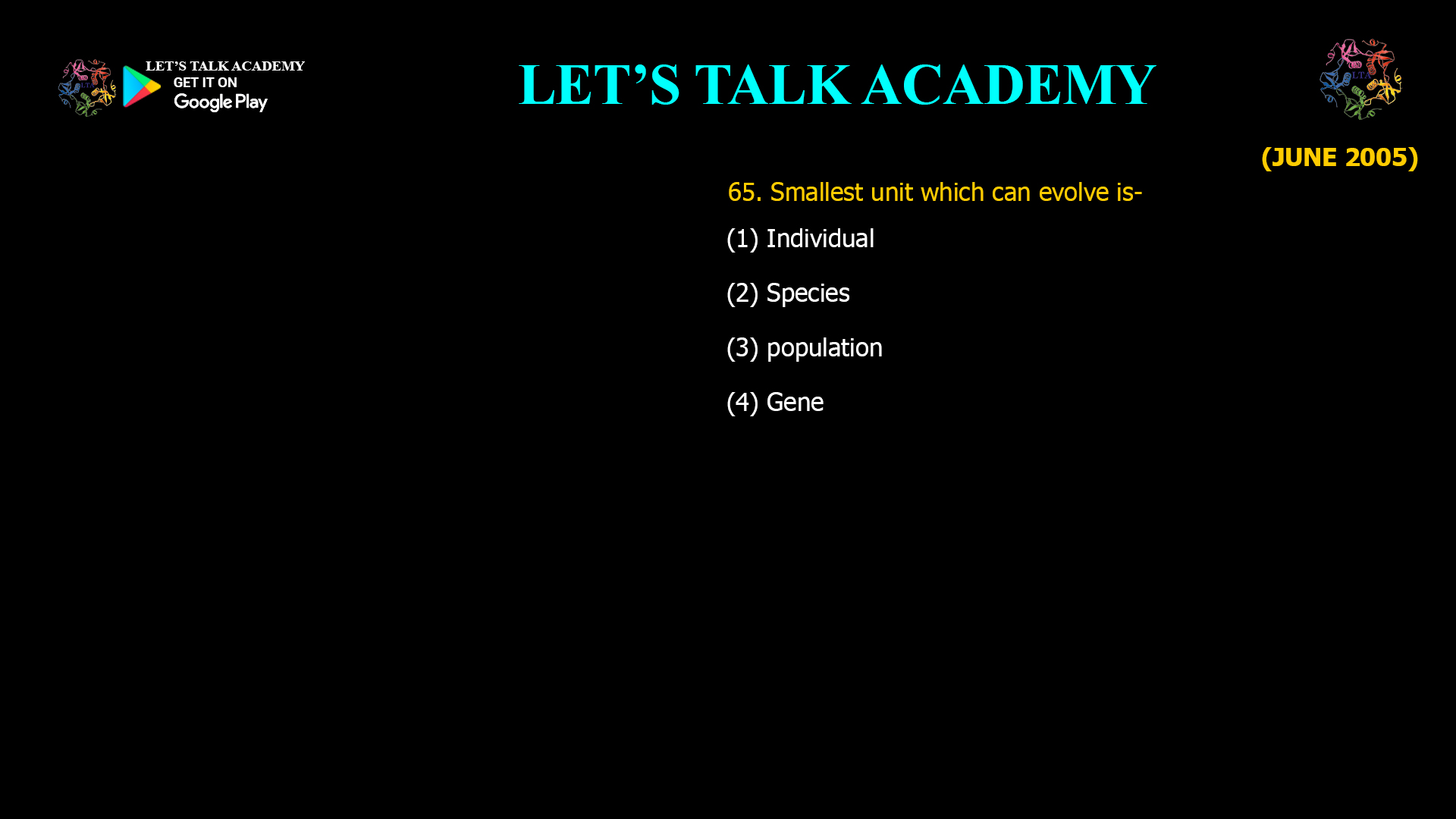- Smallest unit which can evolve is-
(1) Individual (2) Species
(3) population (4) GeneWhat Is a Population?
A population is a group of individuals of the same species living in a specific geographic area who can interbreed. It is within these groups that evolutionary processes, such as changes in gene frequencies, actually occur.
Why Can’t Individuals Evolve?
An individual’s genetic makeup, or genotype, is fixed at birth and does not change during their lifetime. While individuals can experience mutations, these changes only contribute to evolution if they are passed on to the next generation. Evolution is not about individual change but about changes in the genetic composition of a group over time.
How Does Evolution Work at the Population Level?
Evolution is defined as a change in the frequency of alleles (different versions of a gene) within a population over generations. This process, known as microevolution, can be driven by mechanisms such as natural selection, genetic drift, mutation, and gene flow. These mechanisms alter the genetic structure of the population, not the individual.
Key Points:
-
Evolution is observed as shifts in allele frequencies within a population.
-
Individuals carry alleles, but only populations reflect changes in those frequencies across generations.
-
Genetic variation, the fuel for evolution, is maintained and spread through populations, not isolated individuals.
Why Not Species or Genes?
-
Species: A species is a broader classification, often encompassing multiple populations. While species evolve over long timescales, the actual evolutionary changes accumulate in populations first.
-
Genes: Genes are units of heredity, and while mutations in genes are the source of genetic variation, evolution is defined by changes in gene frequencies within a population, not just the presence or mutation of a gene itself.
Table: Comparison of Evolutionary Units
Unit Can It Evolve? Role in Evolution Individual No Experiences mutations, but genotype is fixed for life Gene No Source of variation, but evolution is about frequency changes in populations Species No Composed of populations; evolution occurs within populations first Population Yes Smallest unit where allele frequencies change over time Real-World Example: Evolution in Action
Consider a population of beetles with green and brown coloration. If birds preferentially eat green beetles, brown beetles will become more common over generations. This change in the frequency of the brown gene is evolution, but it is only meaningful when observed at the population level, not in a single beetle.
Conclusion
Population is the smallest unit that can evolve because evolution is defined by changes in allele frequencies within populations over time. Individuals do not evolve; instead, it is the collective genetic makeup of a population that shifts, driving the evolutionary process. This concept is central to understanding how adaptation and diversity arise in the natural world.
-




1 Comment
Sonal Nagar
November 14, 2025population